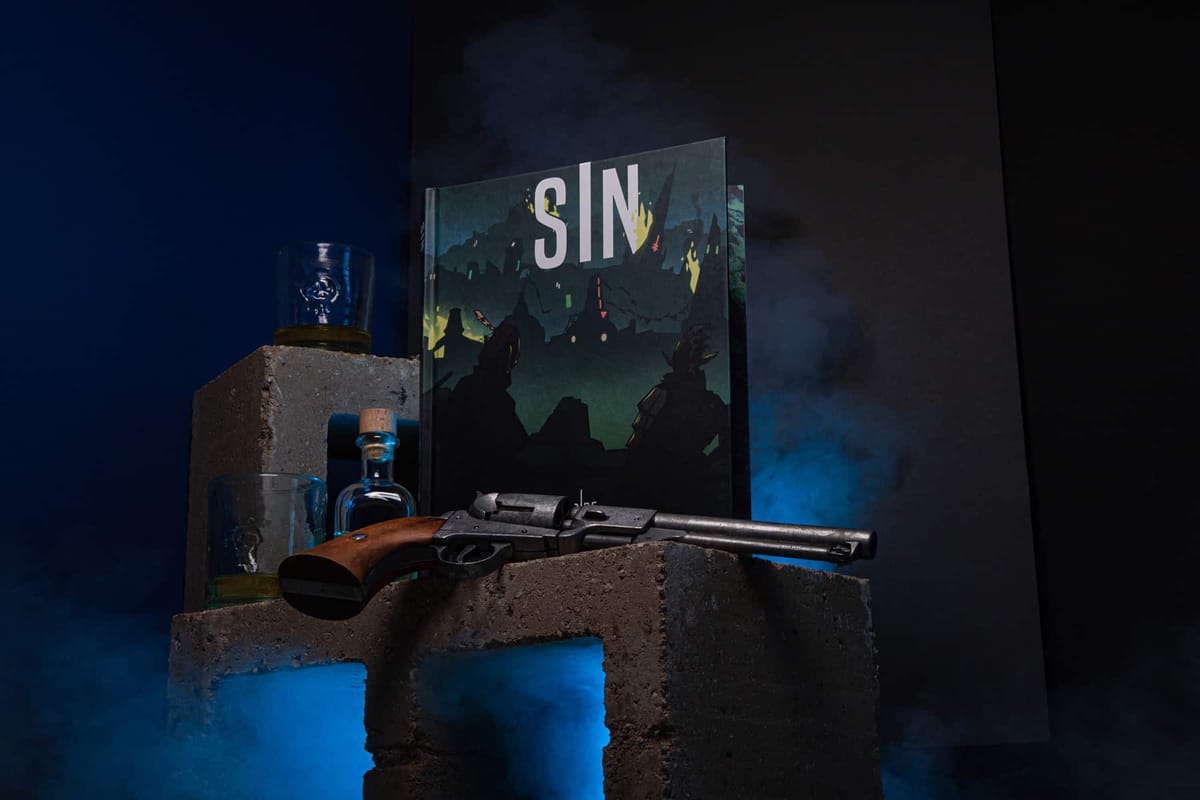
Spire is a game about ill-fated dark elf revolutionaries fighting a hopeless war against an authoritarian Aelfir (high-elf) government in a towering city, the Spire of the title, that is filled with cults, monsters and occult magic. Having taken us beneath the city with the multiple ENNIE award winning Heart, we now have Sin, a new sourcebook that introduces both new lore and mechanics for the city’s forces of religion, crime, order and more.
The company behind Spire, Heart and Sin is Rowan, Rook & Decard, a small but dedicated team of artists and game designers. At the core of the company are three friends, who met at university in Norwich and have since managed that rare thing, to turn their passion for games into a living. Grant Howitt and Chris Taylor, the creative leads, and Mary (Maz) Hamilton who is responsible for the business side of things.
“There is an underpinning of love and trust and that we have each other's best interests at heart,” Howitt tells me while explaining how the company works, a sentiment that all three of them express to me in different ways throughout our conversations.
It is an important dynamic and one they all recognise as potentially risky. Going into business on such a creative project can, and has, fractured friendships in the past. However, by embracing creative freedom, keeping their first principles in mind, building a loyal community and, importantly, producing good games, they have not just survived but thrived.
Spire is a world in which a subjugated Drow population try to undermine the corrupt, beautiful and strange Aelfir’s rule. It is a world of occult societies, illegal religions and wild beautiful magic that Howitt tells me was inspired by Warhammer and “the grand irony” of the 40K universe.
Whilst powered by its own innovative system, one that encourages narrative through gameplay and short, exciting misadventures, Spire began life as a spy-craft focused hack of Dark Heresy (the late ‘00s Warhammer 40,000 RPG). From there the game went through numerous iterations eventually coming to emphasise acts of rebellion rather than spying and with Games Workshop’s IP out of bounds and both Howitt and Taylor frustrated with Dark Heresy’s system, Spire had become very much its own thing.
“It is an evolution of what I wanted Dark Heresy to be, a dark, fascinating, kind of sexy game,” explains Howitt.
Not so much of a Warhammer-head, outside of the world of games Taylor’s principle inspiration is from horror films, especially rural folk horror along the lines of Midsommar, though he does also admit to being partial to the Saw franchise. “It is garbage torture-porn, but you are not going to get a better bottle episode for a horror game,” he explains.
And it is horror that runs through both Heart and Spire. This is a universe full of monsters and body horror and a game where the players are constantly aware that their quest for justice is probably going to have hideous consequences for themselves, the people around them, or as likely both.
An important background to their work is an extensive zombie LARP that the three of them ran whilst at university. Howitt mentions it to me, but it is Hamilton who helps me see how it fits into Spire. Describing the biggest game they organised, which saw them rent out an abandoned shopping centre for it, Hamilton tells me that the innovation was to encourage good deaths, “Everybody dies in these games, but did you die well? Did you die in a way that made you feel powerful?” It’s an idea that still informs Spire’s philosophy where death is highly likely, but how you go is what matters.
This post is for subscribers on the Expert, Companion, Master and Immortal tiers only.
Subscribe now and have access to all our stories, enjoy exclusive content and stay up to date with constant updates.
Already a member? Sign in

